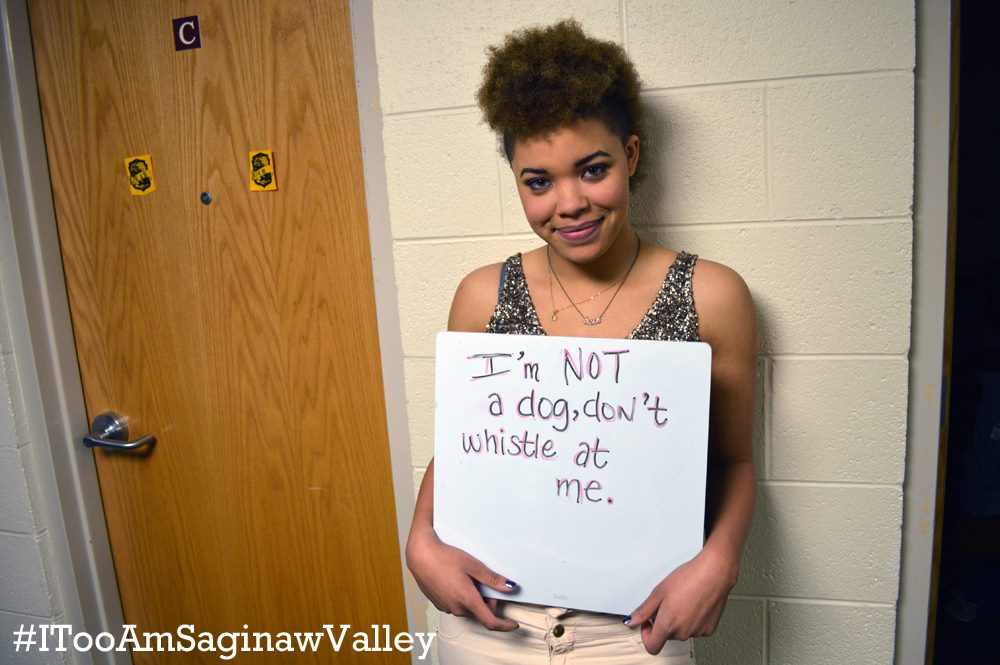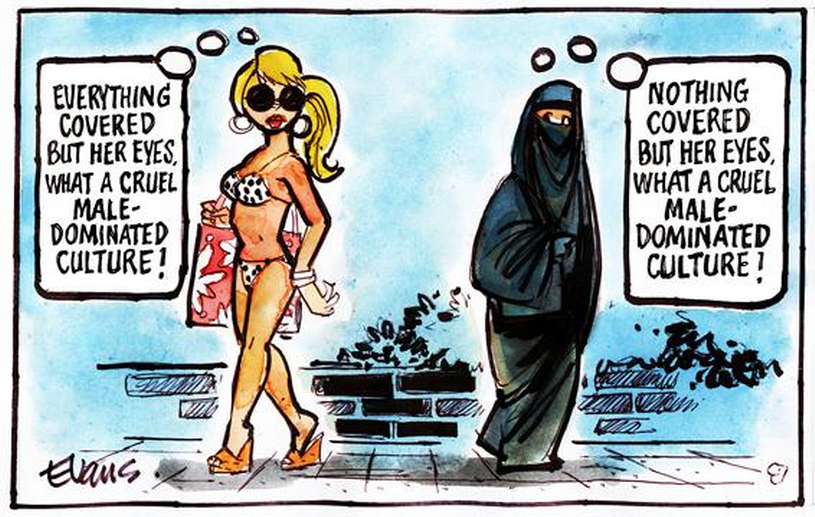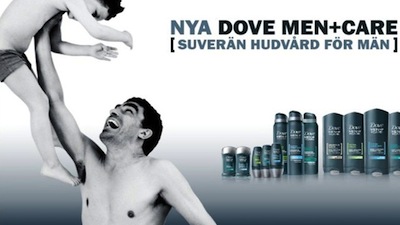Tyler Bradley, Michigan, USA Blog Correspondent
 Up until a year ago or so, I hadn’t considered street harassment as being as prevalent in small communities like the one I live in. I’m enrolled at Saginaw Valley State University, a mid-sized public institution in Mid-Michigan with a student population of about 9,800. I always considered it being more so a problem in large cities, where harassers assume they won’t run into their victims again. The shroud of anonymity I think is a large prerequisite that prompts an environment of harassment. Harassers act when they may feel they cannot be identified nor judged for the actions they perform.
Up until a year ago or so, I hadn’t considered street harassment as being as prevalent in small communities like the one I live in. I’m enrolled at Saginaw Valley State University, a mid-sized public institution in Mid-Michigan with a student population of about 9,800. I always considered it being more so a problem in large cities, where harassers assume they won’t run into their victims again. The shroud of anonymity I think is a large prerequisite that prompts an environment of harassment. Harassers act when they may feel they cannot be identified nor judged for the actions they perform.
That’s why, at my institution, harassment does not often take the form of sidewalk catcalling incidents. The institution is just too small to provide anonymity. But new outlets enable individuals at the institution to take on the shroud of anonymity, which has prompted a culture of harassment.
I first took a more critical look at harassment after a launching an “I, Too, Am Saginaw Valley” campaign, similar to “I, Too, Am Harvard” that highlights the voices and faces of black students, but opening it too all identities — mostly to get a more positive reception within the community. One of my participants wrote on her board, “I’m NOT a dog, don’t whistle at me,” after perpetually being catcalled from others shouting out their residence hall windows. After this, I began seeing the other methods students utilize to victimize others.
Yik Yak, a popular college app where users post anonymous messages that are then voted up or down by their peers, has stormed through the campus community, and brought harassment issues to light. While many of the posts can take on humorous perspectives of campus life, many of them venture on to defaming women, treating them as objects, and other forms of harassment.
It’s been an issue at many campuses, and Boston College even made a video to address some of the Yaks from their students, although it received much backlash from its student body.
Here are a few Yaks that have appeared on our campus:
“If her bra matches her panties when you take off her clothes, it wasn’t you who decided to have sex.”
“You probably shouldn’t be at college if you can’t tell a guy “stop.”
“To the girl who posted about sexual harassment… there’s no way you get sexually harassed, if you catch my drift.”
“Do you ever sit in class and look at this cute girl and think, I would love to bang you after class!”
“You ever just look at a girl and think ‘she could probably suck a mean dick.'”
I shouldn’t need explanation on why each of these posts contribute to a negative campus climate, but they perpetuate myths that “she was asking for it” and that there’s a standard of beauty required to be sexually harassed.
I usually feel more comfortable seeing these posts down-voted to the point where they are removed, which requires a total down-vote of a -5 before it vanishes from the app. But nearly all of these posts registered as positive messages within the campus community and became some of the most popular Yaks on the feed at the time.
While the app usually refrains from targeting individuals, it can justify beliefs that lead to a culture with highly sexualized and objectified women.
Further perpetuating this culture, in March of 2013, we had a Twitter page go rampant among our community. Dubbed “Dbags of the Valley” students submitted passive aggressive complaints about the university, faculty, students, or really whatever they felt like complaining about through Ask.fm, and then the posts would be re-posted on a now-disbanded Twitter account.
Full of hate speech, posts ventured into areas such as “To the girl wearing those tight, see-thru leggings in the library; stop wearing that shit, or I’ll rape you. #DressForSuccess #SVSUdbags.”
By September 2013, assumedly, the manager of the page promptly shut the page down after complaints. The university eventually identified the student behind the page, but decided to not release the name to the public.
Yik Yak and this page are not the only perpetrators of harassment on campus.
Sitting in at 4,585 followers and counting, is the ever-so-popular @SVSUCrushes2. It has a stronger social media following than any university-affiliated accounts, with the exception of the main SVSU social media pages. It takes the same approach as the “Dbags” page, getting submissions from Ask.fm then posting on Twitter. Independently-operated pages began ravaging college campuses for the past couple of years. This account has racked up more than 14,000 crushes tweeted in its two-year lifetime. Most students see this page as harmless, despite relative agreement that some tweets that include “She can sit on my face anytime though..” cross the line. That tweet, by the way, is within the top fifteen favorited and retweeted posts by the page.
Despite becoming temporarily unavailable when the “Dbags” account went under heavy scrutiny, the account still holds a strong presence on campus. The operators of the page reported in an anonymous interview “We know for sure that we know how to handle Crushes in a responsible way,” but it enables a culture of window shopping and objectification on physical appearance.
Through these contributors of harassment, I’ve learned changing a culture is easier said than done, but not doing anything about this would be a greater injustice than the injustice itself. I only have a few more months left at this institution, but I remain hopeful that education will advance the environment here.
Tyler is a senior majoring in graphic design at Saginaw Valley State University and plans to undertake a graduate program in higher education in the fall. Follow Tyler on Twitter, @MysteriousLuigi.




